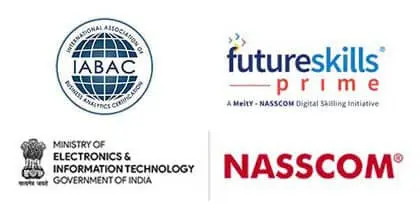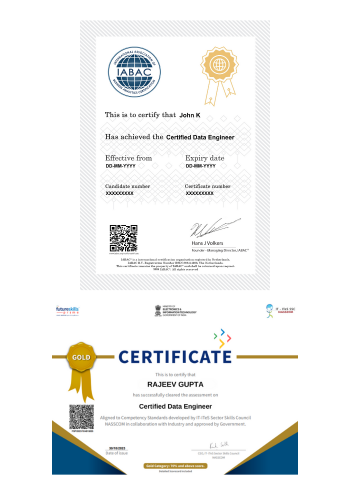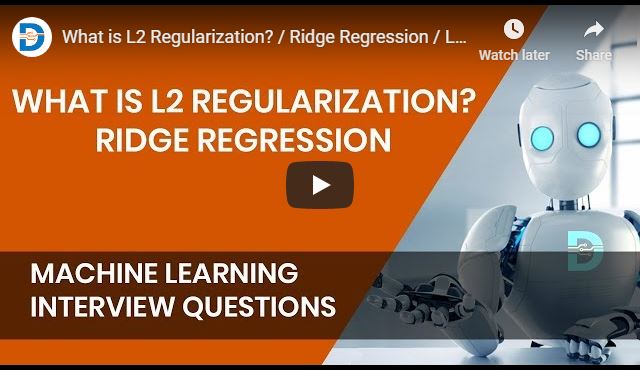Instructor Led Live Online
Self Learning + Live Mentoring
In - Person Classroom Training
The entire training includes real-world projects and highly valuable case studies.
IABAC® certification provides global recognition of the relevant skills, thereby opening opportunities across the world.
MODULE 1: DATA ENGINEERING INTRODUCTION
• What is Data Engineering?
• Data Engineering scope
• Data Ecosystem, Tools and platforms
• Core concepts of Data engineering
MODULE 2: DATA SOURCES AND DATA IMPORT
• Types of data sources
• Databases: SQL and Document DBs
• Managing Big data
MODULE 3: DATA INTEGRITY AND PRIVACY
• Data integrity basics
• Various aspects of data privacy
• Various data privacy frameworks and standards
• Industry related norms in data integrity and privacy: data engineering perspective
MODULE 4: DATA ENGINEERING ROLE
• Who is a data engineer?
• Various roles of data engineer
• Skills required for data engineering
• Data Engineer Collaboration with Data Scientist and other roles.
MODULE 1: PYTHON BASICS
• Introduction of python
• Installation of Python and IDE
• Python objects
• Python basic data types
• String functions part
• String functions part
• Python Operators
MODULE 2: PYTHON CONTROL STATEMENTS
• IF Conditional statement, IF-ELSE
• NESTED IF
• Python Loops Basics, WHILE Statement
• BREAK and CONTINUE statements
• FOR statements
MODULE 3: PYTHON PACKAGES
• Introduction to Packages in Python
• Datetime Package and Methods
MODULE 4: PYTHON DATA STRUCTURES
• Basic Data Structures in Python
• Basics of List
• List methods
• Tuple: Object and methods
• Sets: Object and methods
• Dictionary: Object and methods
MODULE 5: PYTHON FUNCTIONS
• Functions basics
• Function Parameter passing
• Lambda functions
• Map, reduce, filter functions
MODULE 1 : OVERVIEW OF STATISTICS
• Introduction to Statistics: Descriptive And Inferential Statistics
• a.Descriptive Statistics
• b.Inferential Statistis
• Basic Terms Of Statistics
• Types Of Data
MODULE 2 : HARNESSING DATA
• Random Sampling
• Sampling With Replacement And Without Replacement
• Cochran's Minimum Sample Size
• Types of Sampling
• Simple Random Sampling
• Stratified Random Sampling
• Cluster Random Sampling
• Systematic Random Sampling
• Multistage Sampling
• Sampling Error
• Methods Of Collecting Data
MODULE 3 : EXPLORATORY DATA ANALYSIS
• Exploratory Data Analysis Introduction
• Measures Of Central Tendencies, Measure of Spread
• Data Distribution Plot: Histogram
• Normal Distribution
• Z Value / Standard Value
• Empherical Rule and Outliers
• Central Limit Theorem
• Normality Testing
• Skewness & Kurtosis
• Measures Of Distance: Euclidean, Manhattan And Minkowski Distance
• Covariance and Correlation
MODULE 4 : HYPOTHESIS TESTING
• Hypothesis Testing Introduction
• Types of Hypothesis
• P- Value, Crtical Region
• Types of Hypothesis Testing: Parametric, Non-Parametric
• Hypothesis Testing Errors : Type I And Type II
• Two Sample Independent T-test
• Two Sample Relation T-test
• One Way Anova Test
• Application of Hypothesis Testing (Proposed)
MODULE 1: DATA WAREHOUSE FOUNDATION
• Data Warehouse Introduction
• Database vs Data Warehouse
• Data Warehouse Architecture
• Data Lake house
• ETL (Extract, Transform, and Load)
• ETL vs ELT
• Star Schema and Snowflake Schema
• Data Mart Concepts
• Data Warehouse vs Data Mart —Know the Difference
• Data Lake Introduction architecture
• Data Warehouse vs Data Lake
MODULE 2: DATA PROCESSING
• Python NumPy Package Introduction
• Array data structure, Operations
• Python Pandas package introduction
• Data structures: Series and DataFrame
• Importing data into Pandas DataFrame
• Data processing with Pandas
MODULE 3: DOCKER AND KUBERNETES FOUNDATION
• Docker Introduction
• Docker Vs.VM
• Hands-on: Running our first container
• Common commands (Running, editing,stopping,copying and managing images)YAML(Basics)
• Publishing containers to DockerHub
• Kubernetes Orchestration of Containers
• Docker swarm vs kubernetes
MODULE 4: DATA ORCHESTRATION WITH APACHE AIRFLOW
• Data Orchestration Overview
• Apache Airflow Introduction
• Airflow Architecture
• Setting up Airflow
• TAG and DAG
• Creating Airflow Workflow
• Airflow Modular Structure
• Executing Airflow
MODULE 5: DATA ENGINEERING PROJECT
• Setting Project Environment
• Data pipeline setup
• Hands-on: build scalable data pipelines
MODULE 1 : AWS DATA SERVICES INTRODUCTION
• AWS Overview and Account Setup
• AWS IAM Users, Roles and Policies
• AWS S overview
• AWS EC overview
• AWS Lamdba overview
• AWS Glue overview
• AWS Kinesis overview
• AWS Dynamodb overview
• AWS Athena overview
• AWS Redshift overview
MODULE 2 : DATA PIPELINE WITH GLUE
• AWS Glue Crawler and setup
• ETL with AWS Glue
• Data Ingesting with AWS Glue
MODULE 3 : DATA PIPELINE WITH AWS KINESIS
• AWS Kinesis overview and setup
• Data Streams with AWS Kinesis
• Data Ingesting from AWS S using AWS Kinesis
MODULE 4 : DATA WAREHOUSE WITH AWS REDSHIFT
• AWS Redshift Overview
• Analyze data using AWS Redshift from warehouses, data lakes and operations DBs
• Develop Applications using AWS Redshift cluster
• AWS Redshift federated Queries and Spectrum
MODULE 5 : DATA PIPELINE WITH AZURE SYNAPSE
• Azure Synapse setup
• Understanding Data control flow with ADF
• Data Pipelines with Azure Synapse
• Prepare and transform data with Azure Synapse Analytics
MODULE 6 : STORAGE IN AZURE
• Create Azure storage account
• Connect App to Azure Storage
• Azure Blob Storage
MODULE 7: AZURE DATA FACTORY
• Azure Data Factory Introduction
• Data transformation with Data Factory
• Data Wrangling with Data Factory
MODULE 8 : AZURE DATABRICKS
• Azure databricks introduction
• Azure databricks architecture
• Data Transformation with databricks
MODULE 9 : AZURE RDS
• Creating a Relational Database
• Querying in and out of Relational Database
• ETL from RDS to databricks
MODULE 10 : AZURE RDS
• Hands-on Project Case-study
• Setup Project Development Env
• Organization of Data Sources
• AZURE/AWS services for Data Ingestion
• Data Extraction Transformation
MODULE 1: GIT INTRODUCTION
• Purpose of Version Control
• Popular Version control tools
• Git Distribution Version Control
• Terminologies
• Git Workflow
• Git Architecture
MODULE 2: GIT REPOSITORY and GitHub
• Git Repo Introduction
• Create New Repo with Init command
• Copying existing repo
• Git user and remote node
• Git Status and rebase
• Review Repo History
• GitHub Cloud Remote Repo
MODULE 3: COMMITS, PULL, FETCH AND PUSH
• Code commits
• Pull, Fetch and conflicts resolution
• Pushing to Remote Repo
MODULE 4: TAGGING, BRANCHING AND MERGING
• Organize code with branches
• Checkout branch
• Merge branches
MODULE 5: UNDOING CHANGES
• Editing Commits
• Commit command Amend flag
• Git reset and revert
MODULE 6: GIT WITH GITHUB AND BITBUCKET
• Creating GitHub Account
• Local and Remote Repo
• Collaborating with other developers
MODULE 1 : DATABASE INTRODUCTION
MODULE 2 : SQL BASICS
MODULE 3 : DATA TYPES AND CONSTRAINTS
MODULE 4 : DATABASES AND TABLES (MySQL)
MODULE 5 : SQL JOINS
MODULE 6 : SQL COMMANDS AND CLAUSES
MODULE 7 : DOCUMENT DB/NO-SQL DB
MODULE 1: BIG DATA INTRODUCTION
• Big Data Overview
• Five Vs of Big Data
• What is Big Data and Hadoop
• Introduction to Hadoop
• Components of Hadoop Ecosystem
• Big Data Analytics Introduction
MODULE 2: HDFS AND MAP REDUCE
• HDFS – Big Data Storage
• Distributed Processing with Map Reduce
• Key Terms: Output Format
• Partitioners Combiners Shuffle and Sort
• Hands-on Map Reduce task
MODULE 3: PYSPARK FOUNDATION
• PySpark Introduction
• Resilient distributed datasets (RDD),Working with RDDs in PySpark, Spark Context , Aggregating Data with Pair RDDs
• Spark Databricks
• Spark Streaming
MODULE 1: SPARK SQL and HADOOP HIVE
• Introducing Spark SQL
• Spark SQL vs Hadoop Hive
• Working with Spark SQL Query Language
MODULE 2: KAFKA and Spark
• Kafka architecture
• Kafka workflow
• Configuring Kafka cluster
• Operations
MODULE 3: KAFKA and Spark
• Creating an HDFS cluster with containers
• Creating pyspark cluster with containers
• Processing data on hdfs cluster with pyspark cluster
MODULE 1: TABLEAU FUNDAMENTALS
• Introduction to Business Intelligence & Introduction to Tableau
• Interface Tour, Data visualization: Pie chart, Column chart, Bar chart.
• Bar chart, Tree Map, Line Chart
• Area chart, Combination Charts, Map
• Dashboards creation, Quick Filters
• Create Table Calculations
• Create Calculated Fields
• Create Custom Hierarchies
MODULE 2: POWER-BI Basics
• Power BI Introduction
• Basics Visualizations
• Dashboard Creation
• Basic Data Cleaning
• Basic DAX FUNCTION
MODULE 3: DATA TRANSFORMATION TECHNIQUES
• Exploring Query Editor
• Data Cleansing and Manipulation:
• Creating Our Initial Project File
• Connecting to Our Data Source
• Editing Rows
• Changing Data Types
• Replacing Values
MODULE 4: CONNECTING TO VARIOUS SOURCES
• Connecting to a CSV File
• Connecting to a Webpage
• Extracting Characters
• Splitting and Merging Columns
• Creating Conditional Columns
• Creating Columns from Examples
• Create Data Model
Data engineering refers to the discipline that involves the design, development, and management of systems and processes to acquire, store, organize, process, and deliver data. It focuses on building and maintaining the infrastructure and architecture required for efficient and reliable data processing, ensuring data quality, integration, and accessibility. Data engineering plays a crucial role in enabling data-driven decision-making and supporting various data-intensive applications and analytics initiatives.
The timeframe for becoming a data engineer can vary depending on several factors, including the individual's prior experience, educational background, dedication to learning, and the intensity of training. Generally, it takes several months to a couple of years to acquire the necessary skills and knowledge to work as a data engineer. This timeframe involves gaining proficiency in areas such as data modeling, database management, ETL (Extract, Transform, Load) processes, big data frameworks, data warehousing, and other relevant technologies and tools.
The fees for Data Engineer Course in Gandhinagar can vary based on factors such as the training provider, duration of the course, and the extent of the curriculum. Generally, the cost of data engineer training in Gandhinagar falls within the range of approximately 40,000 INR to INR 1,00,000. It is advisable to conduct thorough research on various training providers in Gandhinagar to obtain accurate and detailed information regarding the specific costs of their courses.
Data engineering and data analytics are different but complementary fields. It is not a matter of one being better than the other, but rather depends on your interests, skills, and career goals. Data engineering focuses on designing and managing data infrastructure, while data analytics involves analyzing and interpreting data to derive insights. Both fields play crucial roles in the data ecosystem, and the choice between them depends on your specific interests and career aspirations.
The average salary range for Data Engineers in Gandhinagar can vary based on factors such as experience, skills, and the organization's size. Generally, Data Engineers in Gandhinagar can expect salaries ranging from INR 4,00,000 to INR 10,00,000 per year.
Data Science and Data Engineering are considered as distinct fields. While they are closely related and often work together, Data Science focuses on extracting insights and building predictive models from data, whereas Data Engineering primarily deals with the collection, storage, processing, and management of data infrastructure.
The requirements for enrolling in a Data Engineer Course in Gandhinagar can vary depending on the training provider and the specific program. However, a background in computer science, engineering, mathematics, or a related field is generally beneficial. Some courses may have prerequisites in programming, database management, or statistics.
While experience can enhance job prospects, individuals with no prior experience can still secure entry-level Data Engineer positions by demonstrating relevant skills, completing data engineering training programs, and showcasing practical projects or certifications that validate their knowledge and capabilities.
DevOps and data engineering are distinct fields but share some overlapping concepts. DevOps focuses on collaboration between software development and operations teams, aiming to streamline software development processes, while data engineering focuses on the management and processing of data infrastructure to support data-driven operations and analytics.
The curriculum of a data engineer course typically covers essential topics such as database management, data modeling, ETL (Extract, Transform, Load) processes, big data processing frameworks, data warehousing, data governance, and data integration. It may also include practical hands-on projects to develop proficiency in relevant tools and technologies used in the industry.
To obtain data engineering training in Gandhinagar, you can enroll in the Data Engineer Course offered by DataMites. DataMites is a reputable institute that provides comprehensive data engineering training programs. Our experienced instructors and industry-aligned curriculum will equip you with the necessary skills and knowledge to excel in the field of data engineering.
The key components of the DataMites Certified Data Engineer Training in Gandhinagar typically include comprehensive coverage of data engineering concepts, tools, and technologies. It may cover areas such as data modeling, database management, ETL processes, big data frameworks, data warehousing, data governance, and data integration. The program often includes practical projects and hands-on exercises to reinforce learning.
Eligibility criteria for enrolling in the Data Engineer Course at DataMites® in Gandhinagar may vary depending on the specific program. Generally, individuals with a background in computer science, engineering, mathematics, or related fields are eligible.
The duration of the DataMites Data Engineer Course in Gandhinagar is flexible and depends on the learning mode chosen by the participant. For online instructor-led training, the typical duration is around 6 months with more than 150 learning hours. However, the duration may vary for self-paced learning options.
DataMites® follows a certification process to validate course completion. Upon successfully fulfilling the requirements of the Data Engineer training program, you will receive a certificate from DataMites®. The certification demonstrates your proficiency and completion of the course.
DataMites® offers Data Engineer Courses with placement assistance in Gandhinagar. They aim to provide support to participants in securing suitable job opportunities in the field of data engineering. The specific details of the placement assistance can be obtained from DataMites® directly.
The Flexi-Pass concept offered by DataMites® provides learners with the flexibility to attend multiple batches of the same course within a specified timeframe. This allows learners to review the course content, revise concepts, and reinforce their learning. It provides an opportunity to revisit the course material and gain a deeper understanding of the subject.
Upon successfully completing Data Engineer training from DataMites®, you will be awarded multiple certifications. DataMites® is affiliated with renowned organizations such as the International Association of Business Analytics Certifications (IABAC), NASSCOM FutureSkills Prime, and Jain (Deemed-to-be University). These affiliations guarantee that the training programs meet industry standards and offer recognized certifications, validating your expertise in data engineering.
The documentation requirements for training sessions at DataMites may differ depending on the specific course and program. Generally, it is recommended that participants bring a valid identification proof, such as a government-issued ID card, along with any specific documents mentioned in the communication received from DataMites.
DataMites® usually has a policy in place to address missed sessions during Data Engineer training. They may offer options to access recorded sessions or provide opportunities to attend makeup sessions to cover the missed content.
The DataMites Placement Assistance Team(PAT) facilitates the aspirants in taking all the necessary steps in starting their career in Data Science. Some of the services provided by PAT are: -
The DataMites Placement Assistance Team(PAT) conducts sessions on career mentoring for the aspirants with a view of helping them realize the purpose they have to serve when they step into the corporate world. The students are guided by industry experts about the various possibilities in the Data Science career, this will help the aspirants to draw a clear picture of the career options available. Also, they will be made knowledgeable about the various obstacles they are likely to face as a fresher in the field, and how they can tackle.
No, PAT does not promise a job, but it helps the aspirants to build the required potential needed in landing a career. The aspirants can capitalize on the acquired skills, in the long run, to a successful career in Data Science.











